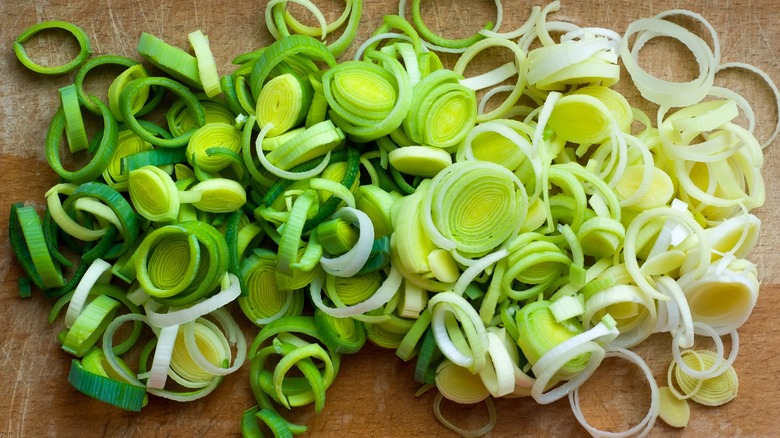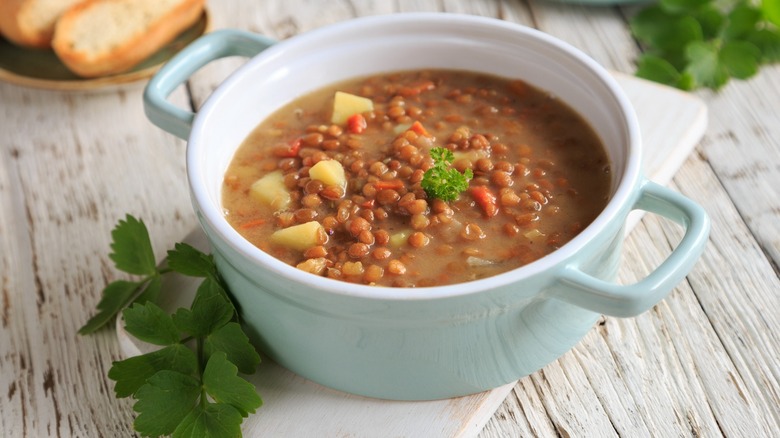Leeks Are The Key Ingredient That Sets German Mirepoix Apart
In the culinary world, the harmonious blend of aromatic root vegetables and fat known as mirepoix has long been revered as the foundation of countless dishes. However, when it comes to the German kitchen, expect suppengrün, an unexpected twist on this classic combination. While it shares some similarities with traditional mirepoix, suppengrün boasts a unique addition that sets it apart: leeks.
Mirepoix, a staple in French cuisine, is typically made up of equal parts onions, carrots, and celery cooked in butter or oil. It serves as the aromatic base for a wide range of dishes, infusing them with a subtle and savory depth of flavor. In contrast, suppengrün, which translates to "soup greens," adds another layer of complexity by introducing leeks to the mix along with the milder-flavored celeriac — also called celery root — as opposed to celery. This triumphant trio of ingredients brings a nuanced, earthy aroma to German culinary creations.
Leeks have a subtle, sweet flavor that complements the more robust tastes of carrots and celeriac. They add a subtle hint of oniony sweetness without overpowering the dish as standard onions would. But another reason that leeks are typically included in the German take on mirepoix is that they are an additional cold climate root vegetable with a long shelf life that's perfect for use during lengthy winters.
Dishes that use suppengrün
The aromatic bouquet of suppengrün is unmistakable in the German kitchen. The combination of carrots, celeriac, and leeks creates an alluring aroma that wafts through the air as it simmers, promising a delicious meal ahead. Suppengrün is a versatile combination of ingredients that finds its way into various German dishes, showcasing its ability to enhance flavors in diverse culinary applications.
A few examples include soups, stocks, and sauces. In the iconic German lentil soup, suppengrün plays a starring role in creating a rich, hearty broth that complements the earthy lentils and smoked sausage. It can also add a fragrant touch to potato soup, contributing to its comforting and soul-warming character. When Germans make stocks, be it chicken, beef, or vegetable, suppengrün is always a vital component.
It imparts a depth of flavor that serves as a solid foundation for many traditional German recipes. The leek-centric mirepoix also finds its place in marinades and braising sauces, where its aromatic qualities enhance the flavors of meats and vegetables alike. So, the next time you're savoring a bowl of German comfort food, take a moment to appreciate the delightful magic of suppengrün in action.

